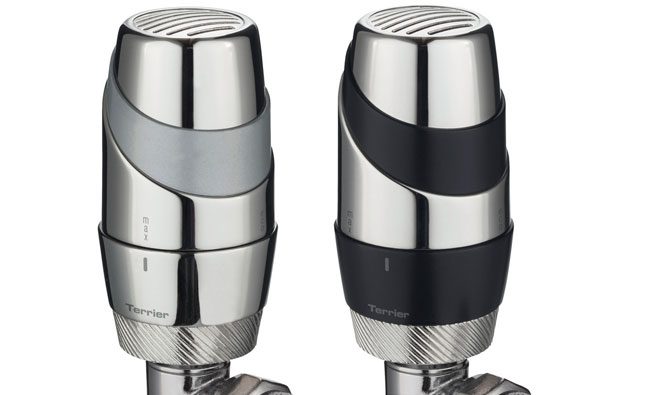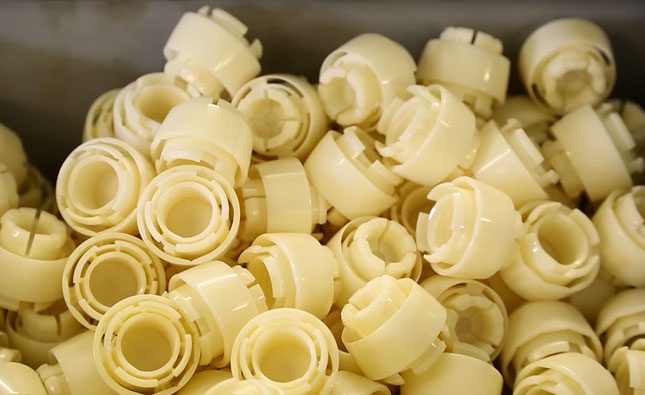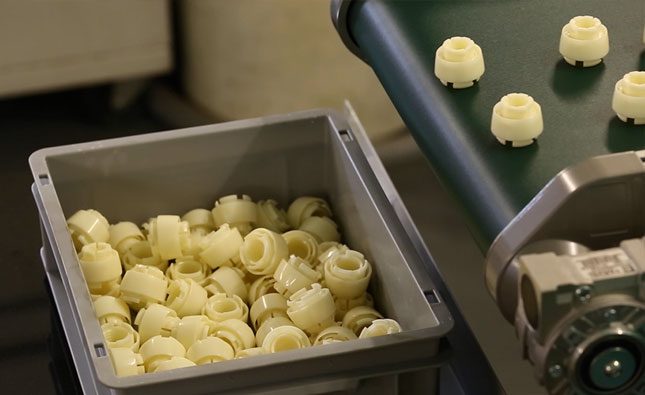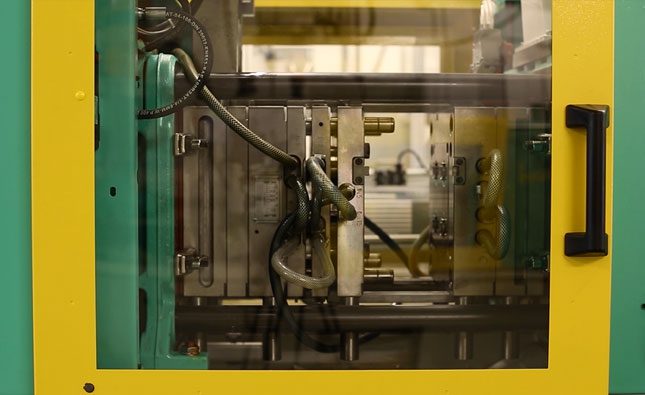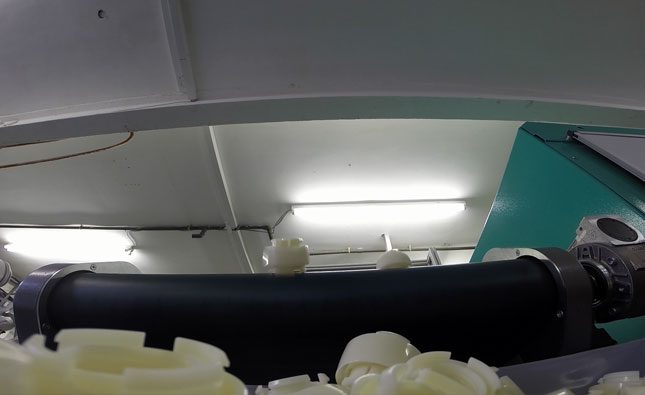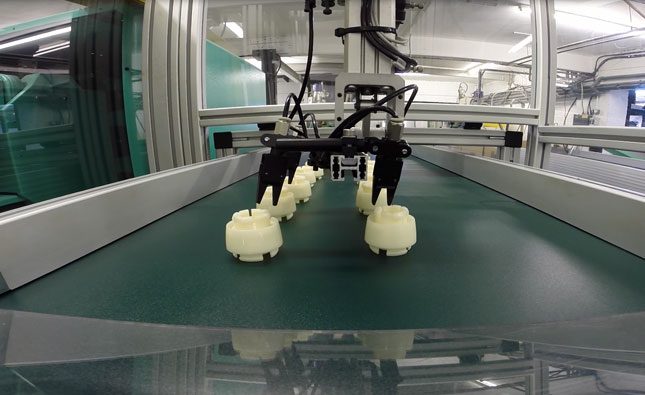TRV
Thermostatic Radiator Valve – Export Tooling
W.E. Amies worked closely with Pegler Yorkshire over a period of almost 2 years, developing and refining their flagship thermostatic radiator valve (TRV).The product had to withstand temperatures of up to 90 degrees centigrade, have reasonable flow properties in order to fill the thinner sections and outperform the stringent torque tests that Pegler Yorkshire has to adhere to. The polymer also had to be plate-able.The first generation product was manufactured in a high temperature ABS, Starex. However, the new concept had thinner wall sections than its predecessor and mould features that should not be subject to extreme injection pressures, therefore, a solution was required.
W.E. Amies conducted a fill analysis of various grades of ABS that would meet these criteria and concluded that Polylac 757 would yield the optimum properties at a reasonable cost.
Injection Point:
The best point of fill was to the thickest section of the component meaning either a 3-plate tool with pin gates or a 4 drop hot runner.
The 4 drop hot runner was chosen in order to keep injection pressures reasonable whilst maintaining the required mould height to fit Amies’ 60T moulding machine.
Opening sequence:
- Opening of A & B plates
- Hydraulic column works to unscrew internal threads
- Opening of plates C & D to release inserts
- Opening of B & C plates to release parts
Screw Thread- This had to be designed so the thread start was exact every shot to maintain the functionality of the TRV.
Cool Pins in BeCu (Ampco) and sub-inserts with independent cooling were utilised to maintain uniform mould temperature.
Stripper plate ejection – to maintain even part push during de-moulding and orevent any undesired stresses on the delicate mould features.
Tooling manufactured by Global Precision in H13, 45-52 rockwell hardness.
Lead time: 35 days
Signed off: T2
Sea Freight: 33 days
